By Pedro Garcia
Our cause is on the advance—our star in the ascendant. The tide is swelling in our favor: shall we take it at its flood…? The army and the people say, advance—seize the golden opportunity…. An opportunity lost, seldom ever returns. The tide, if not taken at the flood, sweeps past us forever.
—Richmond [Va.] Whig, August 7, 1862
On September 7, 1862, Colonel Walter Taylor of General Robert E. Lee’s staff wrote in a letter to his sister, “The Yankee papers of the 6th exhibit a gloomy picture for our enemy. Just now it does appear as if God was truly with us. All along our lines the movement is onward. Ohio, Maryland they expect to see invaded. We are here & I trust Kirby Smith will ere long shell Cincinnati.”
The Confederacy’s Apogee
The colonel was correct in believing that the Confederacy was reaching its apogee in September 1862. In view of the South’s strength mobilized and concentrated in the field, the morale of its soldiers and citizens, and a Confederate offensive push set in motion that saw six Confederate columns on a front stretching from western Virginia to northern Mississippi on a drive to the Ohio River, and a seventh under Kirby Smith that had already entered eastern Kentucky, Taylor’s was a reasonable assumption.
In addition to these seven, General Lee would cross the Potomac into Maryland, and General John C. Breckinridge would be belatedly ordered northward to Kentucky from operations against Baton Rouge. Thus a total of nine columns would be part of the offensive. From August through October 1862, the Confederacy mounted its greatest effort to expel the invaders from its borders and to claim the provinces irredenta. With one eye cocked toward the northwest and the other carefully examining the apparently anomalous situation in two Union slave states, Maryland and Kentucky, the Confederate leaders amused themselves by dreaming of a politico-military offensive. Indeed, historian Frank Vandiver refers to Lee’s campaign into Maryland as “part of the biggest, most comprehensive political campaign attempted by the Confederate government,” and hints that at that late hour some Confederates thought they might yet “detach a Yankee state or two from the Union.”
Flushed with the success of Lee’s campaigns of July and August, coming on the heels of Stonewall Jackson’s victory in the Shenandoah Valley, and the modest cavalry raids of John Hunt Morgan in Kentucky and Nathan Bedford Forrest in Tennessee, the Confederate Senate passed a resolution on September 12, 1862, calling upon President Jefferson Davis to direct his commanders to reaffirm free trade on the Mississippi River wherever “they approach, or enter, the territory of the United States bordering upon the Mississippi River, or the tributaries thereof.” Even if this maneuver did not shake the allegiance of the Northwest, perhaps these military operations, by bringing war to the doorsteps of Union voters for a change, would persuade them to vote for less resolute candidates. The catch, however, was that these operations would have to produce military results.
Now or Never for the Confederate Army
Despite the successes of the summer of 1862, however, the clock was already running against the Confederacy, compelling the South to take normally avoidable risks. The Confederacy currently enjoyed the best odds it could ever hope to obtain after the opening months of the war. The peak number of men that could be put into the field at any one time had nearly been reached, while the North was just beginning to tap its potential. Record-keeping and intelligence were scanty, but it is likely that Southern leaders understood that the 477,000 men the South had in the field in July and August represented 76 percent of the North’s 624,000, giving it a disparity of slightly better than 3 to 4. Certainly the Confederate leaders knew that on July 1 Lincoln had called for an additional 300,000 three-year volunteers. When mobilized, these men would increase the North’s total to 924,000, and tip the scales against the South to odds of worse than 2 to1.
Even with these new volunteers, the North would still have mobilized scarcely 20 percent of its potential military manpower. The South, on the other hand, had already put in the field almost twice that proportion (40 percent) from its pool of white males aged 18 to 45. Furthermore, on August 4 the Northern War Department drafted an additional 300,000 men from the state militias for nine-month service. This would raise the odds against the South to 2.6 to 1. Also, Confederate leaders could not have known that the Lincoln government was fast approaching the decision to enlist blacks as soldiers. The South believed the moment was ripe for action.
The drumbeat of parallel happenings, east and west, rolled with rapidity. On August 16, as General Lee planned to flank General John Pope on the Rapidan, Edmund Kirby Smith’s vanguard crossed into Kentucky. On August 22, as Lee danced with Pope on the Rappahannock, General William Loring, in West Virginia, sent Albert Jenkins on a cavalry raid to the Ohio River. On August 25, as Stonewall Jackson set out for Thoroughfare Gap, General Braxton Bragg of the Army of the Mississippi put the columns of Earl Van Dorn and Stirling Price in motion on western Tennessee. On the 28th, as Jackson fought the skirmish at Brawner’s farm, Bragg left Chattanooga for Kentucky. A surgeon in Bragg’s Army wrote, “Our army is in fighting trim and Bragg is anxious to strike a blow, and will surely do it. I have strong hopes of watering my horse in the Ohio before long.”
Finally, on the 30th, as James Longstreet smashed FitzJohn Porter’s flank on the fields of Manassas, Kirby Smith won an equally brilliant tactical victory at Richmond, Ky. This largely overlooked Confederate victory, coinciding with Lee’s push into Maryland—and England and France seeming as close as they ever would be to intervention on behalf of Southern independence—ushered in what historian Nathaniel W. Stephenson describes as “the one brief space of Confederate history that was pure sunshine.”
General Braxton Bragg was in titular command of five of the northward-marching Confederate columns: his own, the armies of Earl Van Dorn and Stirling Price in northern Mississippi, Kirby Smith’s column, and a smaller force in southwestern Virginia under Humphrey Marshall. In the meantime, Loring launched his own army and a separate cavalry raid under Jenkins to clear the mountainous counties of western Virginia.
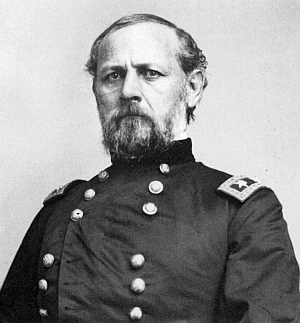 “Bragg ought immediately to advance,” Lee wrote to Secretary of War George W. Randolph on June 19. Ten days later Randolph ordered Bragg, “Strike the moment opportunity offers.” On September 4, President Davis wrote, “You have the field before you and I rely on your judgment.” Athough he ultimately focused on the Union Army of Don Carlos Buell, which had set out from Corinth, Miss., toward Chattanooga, Bragg was never able to exert more than marginal coordination over his disparate command. Even in Kentucky, the three armies (Bragg, Smith, and Marshall) never physically united. In consequence, the grand Confederate offensive was a web of nearly random design held together by the most diaphanous of threads.
“Bragg ought immediately to advance,” Lee wrote to Secretary of War George W. Randolph on June 19. Ten days later Randolph ordered Bragg, “Strike the moment opportunity offers.” On September 4, President Davis wrote, “You have the field before you and I rely on your judgment.” Athough he ultimately focused on the Union Army of Don Carlos Buell, which had set out from Corinth, Miss., toward Chattanooga, Bragg was never able to exert more than marginal coordination over his disparate command. Even in Kentucky, the three armies (Bragg, Smith, and Marshall) never physically united. In consequence, the grand Confederate offensive was a web of nearly random design held together by the most diaphanous of threads.
The plan called for Bragg’s army of 35,000 men and Smith’s army of 18,000 to move in concert against Buell in central Tennessee, catch him in a pincer movement and, after he was “crushed,” advance into Kentucky, being supported on their right flank by the forces of Humphrey Marshall and William Loring from western Virginia. As Bragg moved north through Tennessee and central Kentucky, Kirby Smith would knock out the small Union post holding Cumberland Gap on the border of Tennessee and Kentucky.
“The junction with Bragg if effected in time will I trust enable the two armies to crush Buell’s column and advance to the recovery of Tennessee and the occupation of Kentucky,” Davis wrote to Kirby Smith. Smith had agreed to cooperate with Bragg, and to “cheerfully place my command under you subject to your orders.” Unfortunately, there would be no unified movement; the plan was weakened from the start by Bragg’s vacillation and timidity, coupled with Smith’s boldness and independent command status. Thus neither was in effective charge of the invasion.
In his monumental narrative of the Civil War, Shelby Foote called the Battle of Richmond the nearest in the entire war to being a Cannae, the great Carthaginian victory of the Punic Wars at which Hannibal enveloped both Roman flanks, interdicted the line of retreat, and virtually destroyed the Roman Army. Richmond was the most complete Confederate success west of the Appalachians, although by Civil War standards the battle was not a large engagement. This fact, coupled with Lee’s stunning victory at Second Manassas on the same two days, accounts for why it has largely been ignored by historians. Its obscurity is both ironic and undeserved, for the battle boasts several unique aspects, including a higher percentage of total loss in the Union Army in killed, wounded, and captured than either side suffered in any other single engagement of the war. Strategically speaking, the Richmond fight virtually obliterated Union power in central Kentucky.
Smith Catches ‘Kentucky Fever’
 Enthusiasm for the campaign was fueled by Kentucky cavalry leader Colonel John Hunt Morgan, who asserted that central Kentucky was riddled with Secessionist feeling. Smitten by “Kentucky fever,” Kirby Smith made an alternate proposal to march directly on Lexington, Ky. The proposal drastically changed, indeed, undermined, the original plan that he and Bragg agreed on. Yet surprisingly, Bragg, who could have stopped him early on, acquiesced enthusiastically. The ensuing campaign was to become one of the war’s best examples of what happens when command is not unified and there is no clearly defined military objective.
Enthusiasm for the campaign was fueled by Kentucky cavalry leader Colonel John Hunt Morgan, who asserted that central Kentucky was riddled with Secessionist feeling. Smitten by “Kentucky fever,” Kirby Smith made an alternate proposal to march directly on Lexington, Ky. The proposal drastically changed, indeed, undermined, the original plan that he and Bragg agreed on. Yet surprisingly, Bragg, who could have stopped him early on, acquiesced enthusiastically. The ensuing campaign was to become one of the war’s best examples of what happens when command is not unified and there is no clearly defined military objective.
Marching out of Knoxville on August 14, the Confederates entered Kentucky without significant opposition. A Confederate soldier observed in his diary, “and now we have crossed Tennessee and have advanced 50 miles into Kentucky without firing a gun at Yankees. I certainly expected we would encounter Buell and have one desperate battle before leaving Tennessee, but that gentleman seems to have taken wings and left the country in double quick time.”
Electing to bypass the Union garrison at Cumberland Gap, Kirby Smith’s army moved through gaps in the mountains to the west. Plunging deeper into the Bluegrass State, he found it to be in the midst of a devastating three-month drought and the country around him to be as “poor as Job’s turkey” and, contrary to Morgan’s boasts, the locals viewed Secessionists with hostility. Typical of this attitude was the response received by one of Kirby Smith’s troopers from a member of a family sitting on a porch. “Where does this road go?” inquired the cavalryman. “Don’t go nowhere, dammit, it stays right here.” The Confederate commander put it succinctly in a letter to his wife: “The people are bitterly and violently opposed to us.”
Kirby Smith had four divisions, three of which—commanded by Generals Thomas J. Churchill, Patrick R. Cleburne, and Harry Heth—contained about 3,000 men each. The remainder of the army of 9,000 men was organized in one large division under General Carter L. Stevenson, and was about the same size as the Union garrison at Cumberland Gap. Unwilling to leave such a large force in his rear unattended, Kirby Smith ordered Stevenson to remain behind to keep an eye on the Yankees. By August 26, Cleburne and Churchill’s Divisions started north toward Richmond and Big Hill, while Heth’s remained just north of Stevenson to await reinforcements and the army’s wagon train.
It was a terrible march; the roads went through almost impassable mountains in ankle-deep dust. The weather was dry, the temperature was in the 90s, and water was almost unobtainable. The infantry outran their supply wagons and lived off the countryside as best they could. But morale was high, and the two lead divisions completed the march in three days. Kirby Smith’s unilateral thrust into central Kentucky wrested control of the campaign away from Bragg and made it doubly difficult to coordinate movements. With Kirby Smith so far north of him, Bragg moved out of Chattanooga, feinted toward Nashville, and moved north into Kentucky following the Louisville and Nashville Railroad. Thus outflanked, Buell’s Army of the Tennessee was obliged to move north as well.
‘Bull’ Nelson Takes Command
Meanwhile, a growing collection of green troops—6,500 men in two divisions and styled the “Army” of Kentucky—was assembled and put under the command of one of Buell’s division commanders, Maj. Gen. William “Bull” Nelson. Nelson was a native Kentuckian and had established his headquarters in Lexington.
General Horatio Wright of the Department of the Ohio had little confidence in the new recruits, and issued the following simple requiem to Washington, “If you say go, they go, but I shall not expect success except by chance.” He believed the Kentucky River line offered the most favorable terrain to meet the advancing Confederates. So he ordered Nelson to Lexington. Wright expected Nelson to make his line of defense along the formidable granite bluffs rising straight up from the water. General Lew Wallace, of subsequent fame as the author of Ben Hur, was temporarily in charge until Nelson arrived and deployed the men. Kirby Smith’s intended target being unclear, Wallace advanced troops and artillery to the Kentucky River, also dispatching troops south to Lancaster and others southeast to Richmond. Union cavalry was sent to scout south of Richmond toward Kingston and Big Hill.
On August 24, Nelson arrived in Lexington and relieved Wallace. It soon became apparent that Nelson had his own ideas. A loud, brassy, highly profane man who was disdainful of the opinions, wisdom, and feelings of others, he determined to fight Kirby Smith south of the Kentucky River line, forwarding the forces at the river on to Richmond. Nelson kept some troops in Lexington and moved others to the area of Lancaster and Danville west of Richmond, several miles south of the river. This force would threaten Kirby Smith’s flank if he ventured farther north. Nelson also ordered three infantry regiments and their artillery to move from Nicholasville to join the five regiments already in Richmond. His plan was “to mass the troops, knowing that the enemy would not cross the Kentucky River while 16,000 men were on their flank.”
When Kirby Smith entered Kentucky, his cavalry had screened his movements and had scattered several Union units along the way. On August 23 at Big Hill, they captured a wagon train headed to Cumberland Gap from Richmond, utterly routing its green and panic-stricken escort. The victorious Southern troopers rode on to Richmond, and demanded its surrender. Unable to force the issue when this was refused, the troopers withdrew to Big Hill to wait for Kirby Smith.
On the 25th, Union cavalry was sent west and south of Big Hill on a reconnoitering mission to see if they could learn something of Smith’s location and intentions. By the evening of the 28th, they were able to report a growing Confederate strength in the Big Hill area. But next came a serious breakdown in field intelligence. The report was forwarded to Nelson in Richmond, but the cavalry realized that Nelson had just left for Lexington. Consequently, he never saw the report, and it is reasonable to assume that had he known Kirby Smith was concentrating near Big Hill, he quite probably would have reunited his badly divided forces the next day.
The regiments in Nelson’s Provisional Army of Kentucky were organized into two brigades commanded by Generals Mahlon Manson and Charles Cruft. Both men had commanded brigades in Nelson’s former division in Don Carlos Buell’s Army. Both men were political appointees with no combat experience and little confidence in their troops. Cruft could have been speaking for all eight regimental commanders when he opined, “It was a sad spectacle for a soldier to look at these raw levies and contemplate their fate in a trial at arms with experienced troops.” He further lamented that his troops “could but indifferently execute some of the simplest movements in the manual of arms.”
What had prompted Nelson’s visit to Lexington on August 28 was the lack of any telegraph line between there and Richmond, leaving him without direct contact with his other forces in Lancaster and Danville. He had left General Manson in command at Richmond in his absence, instructing him to remain where he was rather than starting west to join his planned concentration at Lancaster. In this manner, Nelson had compounded his error of remaining below the Kentucky River. The next day Nelson would be able to telegraph Horatio Wright, “Kirby Smith’s game is now clear. He will assail Buell in left and rear.” Nelson then concentrated his total force, including troops from the Department of Ohio and central Kentucky, 16,000 men in all, southwest of Richmond at Lancaster. If Kirby Smith moved back toward Buell in Tennessee, Nelson reasoned, he would be on Smith’s flank, or if Smith moved straight up toward the Bluegrass region of Kentucky, he stood in his path. Given the information he had, this speculation was reasonable and sensible, but he was wrong.
The Confederates’ Long March
August 29 saw the Confederates complete a grueling three-day march that pushed the limits of endurance. “Ragged, bare footed, almost starved, marching day and night, exhausted from want of water,” Kirby Smith wrote. “I have never seen such suffering, and there is not a complaint, not a murmur. Such fortitude, patriotism, and self control has never been surpassed by any army that ever existed.”
Marching on nearly impassable roads, in a drought-plagued country, the Confederates had penetrated deeply into Kentucky and had reached Big Hill, 16 miles south of Richmond. In the van was Patrick Cleburne’s Division with Thomas Churchill’s Division stretched out behind him on the Richmond road. Kirby Smith’s cavalry, scouting well beyond the infantry, had been in constant contact with the enemy for the previous six days and had kept him informed of the gathering forces around Richmond, far below the strong line of the Kentucky River. Driven on by the assurance that his enemy were green levies and that they were unaware of his strength because his advance had been so rapid, Kirby Smith was champing at the bit for a fight. If the Yankees had known his strength, he later wrote, they would have “opposed us in the passes and strong positions of the Cumberland mountains, or would have posted themselves along the high bluffs and precipices of the Kentucky River, where they could have resisted the passage of even a greatly superior force.”
That morning Union cavalry stumbled onto the Confederate advance, and sent back a report to General Manson, who was camped a few miles away; it reached him at 11 am. The report was then forwarded to Nelson who, in another striking failure of field intelligence, did not see it for nearly 16 hours. Three hours after Union troopers sent the first report to Manson, they sent a second one telling him that 4,000 to 5,000 Confederates were advancing in earnest. Kirby Smith wrote: “The only question for me now to determine was whether I should allow the enemy to attack me in camp, or whether I should advance to meet him. To retreat would be to be considered a coward, dismissed in disgrace.” Besides, there was a ridge, dominating high ground a mile and a half south of his position, which he knew the Confederates would occupy if he did not.
Forced to disregard Nelson’s instructions to stay where he was, Manson later explained, “It did not take me a moment to decide.” He aggressively pushed his brigade forward to occupy the high ground, and almost immediately his artillery drove off the probing Confederate cavalry. In fact, advancing with surprising ease, Manson’s van was able to capture a handful of prisoners and some horses, as well as a few cannon. Manson’s artillery continued to keep Confederate horsemen at bay, and by nightfall he had advanced farther south along the ridge to the sleepy hamlet of Rogersville. Feeling quite good about his prospects, Manson went into camp after pushing forward his cavalry. Shortly after he had thrown his cavalry forward to reconnoiter, they came upon Confederate horsemen whom they chased pell-mell back to Cleburne’s carefully deployed lines. Volleys erupted that tore into the ranks of the Union troopers, who in turn were driven as badly as they had been at Big Hill. This ended the day’s fighting. It prompted Kirby Smith to believe that his proper course was to march on Lexington, so he ordered Cleburne to attack in the morning. His opponent, Manson, ordered Cruft to be ready to march to his support at daybreak.
In the predawn darkness of August 30, Manson’s troops fixed their coffee and stumbled about trying to find water for their canteens. It was not long before Patrick Cleburne’s Division was detected marching north through the village of Kingston. After dispatching orders to Cruft to join him, Manson immediately deployed his brigade one mile beyond Rogersville just south of Mt. Zion Church. The Union troops would establish themselves in a defensive line on either side of the church, which was on high ground facing the Richmond Road, and about 51/2 miles below Richmond.
The 55th Indiana was deployed east of the road, the 69th west of it, the 71st behind the 55th in reserve. Before long, the artillery unlimbered and began to rake the head of Cleburne’s column. Cleburne responded to this destructive fire by deploying his division east of the Richmond Road, and along a road that ran east and west just north of Kingston called the Irving-Lancaster Pike. He also placed his own artillery on the front line, employing them in a methodical counterbattery fire, imploring them to “fire slowly and not waste a round.” Cleburne, who was initially in command before Kirby Smith’s arrival at about 7:30 am, aggressively sought to fight the enemy by maneuvering his division into an extended line beyond the enemy’s eastern flank.
But the bold flank attack was delayed by Kirby Smith, who advised Cleburne not to advance on Manson’s strong position until Thomas Churchill’s Brigades arrived. Once in position, one of Churchill’s brigades would hit Manson’s right, while Cleburne would advance Colonel Benjamin Hill’s Brigade east of the road against Manson’s center. Colonel Preston Smith’s Brigade was to be held in reserve to exploit any breakthrough, or slide off to the east and hit Manson’s left.
Manson’s Mistakes
Manson had feared an attack on his left flank all along, and that fear would drive him to make a series of calamitous mistakes. The last of Manson’s four regiments, the 16th Indiana, arrived in the midst of the furious artillery duel. The Hoosiers were put front and center between the 55th and 69th Indiana Regiments. In effect, the Union left flank had been extended beyond Cleburne’s right. About 10 am, the leading brigade of Churchill’s Division under Colonel Thomas McCray began arriving in the woods east of the Richmond Road, and soon a very spirited exchange of small-arms fire erupted.
This skirmish convinced Kirby Smith and Cleburne that Manson was planning to turn the Confederate right. Cleburne countered by moving the 154th Tennessee, the regiment that held the extreme right of Preston Smith’s reserve line, forward and east to extend the line of Hill’s Brigade. Meanwhile, as Colonel McCray’s Brigade deployed in the vicinity of Mt. Zion Church to prepare for its advance on the Union right flank, Manson became convinced that the threat was to his left flank. Accordingly, Manson sent his reserve regiment, the 71st Indiana, as well as seven companies of the 69th Indiana that had been posted on the right flank, to support his left. Thus, only three companies of the 69th remained on the right to confront McCray’s Brigade.
The hot skirmish that erupted along the whole front of Manson’s line east of the Richmond Road, as the 55th, 16th, and 69th Indiana advanced to within a hundred yards of the Confederate line, provoked an immediate response from Cleburne. The former Irishman moved the 13th and 15th Arkansas Regiments under the command of Colonel Lucius Polk to the support of the 154th Tennessee on the eastern flank, and when far enough into the woods, swung them into a 90-degree angle to the end of Manson’s line. It had become evident to Cleburne that the enemy “had staked everything on driving back or turning our right flank and that they had weakened their center to effect this object.”
Still unaware of McCray’s impending attack, Manson, by overloading his left, had triggered the response he feared the most: an attack against that portion of his front. Furthermore, a trick of the terrain led him to make a series of tactical blunders. From his position with the 55th Indiana behind and in center of the Union line, he could not see McCray’s column approaching his right flank. Less than a quarter-mile west of him ran a creek known as Hayes Fork, and a mile beyond it was a big cornfield, north of which was a ravine that cut beyond his right flank. None of this was visible to him.
The Confederates moved through the cornfield and ravine and then burst on the luckless Union troops, who had not seen the Rebels coming either. As McCray hit the right at the church, Preston Smith’s Brigade nimbly executed Cleburne’s wishes by forming a 90-degree angle to Manson’s left, achieving a deadly enfilade from which they loosed massive volleys. The raw Yankees quickly went to pieces and began to dissolve into something close to chaos.
Meanwhile, Pat Cleburne was preparing to personally lead Hill’s Brigade straight ahead toward Manson’s center. As he rode over, he stopped to talk to Polk, who had been wounded, and was himself hit by a ball, which blasted four of his teeth and passed out his open mouth. This deprived him, as he wrote, of “the powers of speech, and this rendered my further presence on the field worse than useless.”
But by this point, Cleburne didn’t really need to talk. Despite the wound and his subsequent absence from the field, his earlier tactical dispositions set in motion a bold attack and were an early indication of the skill that would identify Pat Cleburne as one of the Confederacy’s best generals. His maneuvering had brought much of his division into an extended line beyond the enemy’s eastern flank, and by observing that the enemy was reinforcing that flank, he correspondingly made plans to quickly strike at the point from which Union troops were being removed—in addition to the planned flank attack.
Into this desperate situation, Charles Cruft’s Brigade began arriving on the field, the 95th Ohio in the vanguard, marching at the double-quick from its camp at Richmond. Colonel William McMillan, commanding the 95th, was directed to position the regiment on the right flank, reinforcing three companies from the 69th Indiana, and ordered to quickly charge a Rebel battery that was unlimbering to support McCray’s advance against Mt. Zion Church. The order should never have been given, and McMillan should have questioned it. With no time to deploy, the scattered regiment would have to advance squarely in front of McCray’s troops, which were then spilling out of the ravine toward the church.
Union Forces are Routed
The Confederates ripped into the Ohioans. “Whilst we were thus engaged,” recalled McMillan, “the enemy advanced his right and left wings, outflanking and driving our forces before him. Seeing that it would be reckless and useless to continue our assault upon the battery, I ordered the regiment to halt and fall back, which they did, for a time, in good order, losing, however, in addition to our killed and wounded, 160 men and a large number of officers at this point.” Lieutenant Colonel J.B. Armstrong, who assumed command when McMillan inexplicably left the field, had a different version. Besides the many biting and caustic comments in his account, Armstrong claimed that McMillan’s actual order was for “every man to save himself,” and puts the number of captured at 200.
Manson recalled that “the rout had become general.” Next up was the 18th Kentucky, establishing a line behind which the bloodied 95th and Manson’s broken units could reform. In the face of the persistent Confederate advance, the 18th bravely stemmed the tide. But after a short time the regiment retired with severe losses. General Cruft commended the 18th for having “prevented the retreat at this time from becoming a rout,” but acknowledged that “the panic was well-nigh universal. The time was 10:30 a.m. The whole thing was fast becoming shameful.”
The 12th and 66th Indiana were left of Cruft’s Brigade, and these troops were moved back two miles in the rear of the first battle line in an attempt to rally the rest of the command. Cruft cobbled together a new line west of the Richmond Road, and Manson’s shattered regiments formed east of the road, not far from where Manson’s infantry had driven off Confederate cavalry the previous afternoon. As Manson and Cruft were watching the Confederates forming to advance on the new line, a courier arrived from Lexington and handed Manson an order from General Nelson, a directive that should have been sent two or three days earlier. It instructed Manson not to fight at Richmond, but to march west to Lancaster! Nelson had sent the order 10 hours earlier at 2:30 am in response to the cavalry report the previous day.
Within minutes the confident Rebels, intent on finishing the battle, advanced, McCray’s column spearheading the drive toward Cruft’s position. Preston Smith’s Brigade moved on Manson’s position. When they got to within 400 yards, a Yankee battery of six guns belched cannister, rapidly followed by volleys of musketry. It was, reported McCray, “the most incessant firing of cannon and musketry I have ever heard.”
Cruft’s troops fought with an astonishing determination that checked the Rebel assault. But the butternuts were in earnest, pressing onward until they reached a thickly overgrown fence, about 200 yards from Cruft’s line. McCray, “finding the air literally filled with bomb-shells and Minie balls,” ordered the troops to lie down under cover. Emboldened by their defense, and perhaps thinking the tide had shifted to them, the Yankees counterattacked. When this advance had closed to within 50 yards, McCray gave the order to “rise and fire!” A storm of bullets buzzed through the air like angry insects, knocking down men with fearful effect, driving the Yankees back “in the wildest confusion and disorder.”
Nelson Attempts a Union Rally
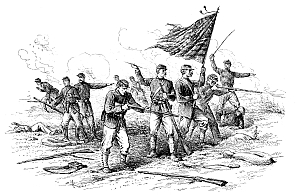 The Rebels up and down the line relentlessly pushed forward, both Union brigades melting away before them. Now the second Union battle position had been broken, and as Manson and Cruft worked furiously to regain and retain unit cohesion, they determined to make another stand on the southern outskirts of Richmond, at the city cemetery. As the new position was being organized, sudden cheers erupted that signaled the arrival of the army’s commanding general, “Bull” Nelson.
The Rebels up and down the line relentlessly pushed forward, both Union brigades melting away before them. Now the second Union battle position had been broken, and as Manson and Cruft worked furiously to regain and retain unit cohesion, they determined to make another stand on the southern outskirts of Richmond, at the city cemetery. As the new position was being organized, sudden cheers erupted that signaled the arrival of the army’s commanding general, “Bull” Nelson.
No doubt some who cheered him soon regretted it, or as one historian put it, “General Nelson in a raging temper attempted to restore order by beating his soldiers over the head with the flat sides of his sword.” Whatever words passed between Nelson and Manson when they met on the field are not recorded, but later Nelson bitterly accused Manson of disobeying his order to avoid a fight and take the army to Lancaster. Generals Nelson, Manson, and Cruft managed to rally 2,500 troops on the crest of a low-lying ridge, where they deployed behind a stone fence and some cemetery tombstones. Meanwhile, Kirby Smith let his enervated Confederates rest for about an hour—the fight had been going on for eight hours under a punishing sun and had covered miles of ground. When reorganized, the plan of attack would go forward unchanged: Strike the flanks, with Thomas Churchill advancing on the left and Preston Smith on the right. On the cusp of a complete success, Kirby Smith added a new wrinkle, sending his cavalry on a sweep around Richmond to cut off the expected Union retreat.
It was about 5 pm when the Confederate general advance was ordered. Union artillery opened first, firing shells and then cannister at the disciplined Rebels. The Union soldiers waiting for Kirby Smith’s men were not quite as green as they had been earlier in the day. The pair of drubbings they had received taught them a great deal about combat, and now they were delivering a withering fire and exacting a heavy price. A Southerner recalled, “We quickly formed our lines and moved on the cemetery, and in 20 minutes 140 men of the 2nd Tennessee and 128 of the 48th Tennessee were killed and wounded.”
With the setting sun’s rays wreathed in sulphurous smoke and presenting a blood-red hue, General Nelson rode among the troops, attempting to inspire them and threatening them with bodily injury if they failed to do their duty. Displaying his huge bulk he shouted, “Boys, if they can’t hit something as big as I am, they can’t hit anything!” Perhaps his entreaties worked because the Union line held firm and responded in kind to a murderous Southern volley.
But within seconds, another deadly volley ripped into the Union lines, and those who were not killed or maimed broke for the rear. Nelson, who was shot down when a pair of balls smashed into his thigh, recalled, “They stood about three rounds, when struck by panic, they fled in disorder.” The panic-stricken mob that had been the Union Army fell back in utter disorganization through the streets of Richmond and onto the Lexington Road. Of course, it was there that Kirby Smith’s cavalry awaited them. His troopers shot down a good many men, and by the hundreds they surrendered. Confederate Major Paul Hammond wrote that the “havoc was frightful, and the Federals threw down their arms and surrendered in crowds, and of the few who escaped not one in ten carried his musket with him.” First concealing himself in a cornfield, Nelson managed to sneak away. There were so many prisoners that the cavalry commander could not give Kirby Smith an accurate estimate, he simply reported that he “had a ten acre lot full.’’
Confederate Victory
The Battle of Richmond can never compare with the numbers engaged at Cannae, yet the tactics and the one-sidedness of the battle are eerily reminiscent of that clash. The Union loss was 206 killed, 844 wounded, and 4,304 missing (mostly captured), with only between 800 to 900 managing to escape. Confederate losses were 98 killed, 492 wounded, and eight missing. Kirby Smith pushed on to occupy Lexington, where he wrote his wife, “I am well and have the most enthusiastic reception in Kentucky—the whole population is turning out in mass…. Recruits are flocking to me by the thousands,” asserting that “all of Kentucky to the Ohio is at our feet.”
Indeed, enthusiasm abounded. The Richmond (Virginia) Dispatch wrote: “We think we may safely say that the day of Kentucky’s deliverance from the hateful thrall of abolition despotism has brightly dawned.” Vast military opportunities lay before the Confederates, but it would remain to be seen whether they would reap the harvest.
“Kentuckians,” proclaimed General Bragg on September 14, “I have entered your state with the Confederate Army of the West, and offer you a chance to free yourselves from the tyranny of a despotic ruler.” Indeed, the reception was encouraging, many waving and cheering the Confederates. One Rebel remembered “how gladly the citizens received us.”
The stolid Northern commander Buell, while casting a wary eye toward Kirby Smith, focused his attention on Bragg, whose march had developed on his rear, threatening his communications. But Buell did not move his whole army north to secure his line of communication because he concluded that if he did, Bragg would pivot westward, capture Nashville, and reconquer middle Tennessee. Buell’s slow and methodical withdrawal north allowed Bragg to reach Buell’s rear and place his army astride the great geographical axis that was the Louisville & Nashville Railroad. For the Confederates, a successful campaign hinged on denying Union forces access to the all-important transportation and communication artery. In fact, it was along the L&N, on September 17, that Bragg gained a small tactical victory at Munfordville, Ky.
Buell’s Blunder
But Bragg then faced a decision: Should he wait to fight Buell’s slowly approaching army before it reached Louisville, or should he turn east to join Kirby Smith? He chose to abandon the railway to join Kirby Smith. Buell then took advantage of this strategic blunder and moved his army up the L&N Railroad to Louisville. To historian Stanley Horn, Bragg’s failure to fight Buell represented “probably the war’s greatest moral crisis.” He continued in his Army of the Tennessee—A Military History: “After an admirably devised and executed movement of more than 600 miles, he had placed his army exactly where he wanted it—squarely across the enemy’s line of communication. His soldiers were inspired by the Munfordville victory, and Buell’s men correspondingly depressed. There was every sound reason why he should fight at once, and there is some evidence that he thought of it … but he did not fight.”
A cavalry brigadier issued this searing indictment: “Here was the 1st exhibition of Bragg’s vacillation, that fatal irresolution, which was to wither the bright hopes his promises and his previous action had aroused.” Robert Henry, a Southern historian, echoed these sentiments, adding that Bragg squandered an opportunity to seize Louisville: “The Confederates were between Buell and his base squarely on his line of march, and in position to fight or to march into Louisville ahead of the Union Army.” More recently, Charles Roland has underscored this argument by writing that “the Confederates probably could have taken Louisville if they had marched directly upon it from Munfordville. Bragg was between Buell and Louisville and Kirby Smith was closer to Louisville than Buell was.”
As long as the Federals held Nashville and were in control of the railroad back to Louisville, the Rebels in Kentucky were mere raiders. The whole campaign was beginning to look like a Confederate fiasco. Nor was that the worst news. Recruitment of Kentuckians had been, at best, a meager affair. “I regret to say we are sadly disappointed by the want of action by our friends in Kentucky,” Bragg told Jefferson Davis, adding that, “the campaign here was predicated on the belief and the most positive assurances that the people of this country would rise in mass to assert their independence. No people ever had so favorable an opportunity, but I am distressed to add there is little or no disposition to avail of it. Willing, perhaps, to accept their independence, they are neither disposed nor willing to risk their lives or their property in its achievement.” Kirby Smith concluded that “their hearts are evidently with us, but their blue-grass and fat-grass are against us.” Bragg, realizing the fruitlessness of his proclamation, reported that, “Unless a change occurs soon, we must abandon the garden spot of Kentucky to its cupidity.”
One is left to speculate what a major achievement such as the seizure of Louisville might have done for recruiting. The object of the campaign, of course, was to bring Kentucky into the Confederate fold. Yet, how was this to be achieved, and what was the goal of the campaign? Was the goal Louisville, Lexington, some point or points on the Ohio River, or some other strategic place? This was never clearly defined. In the absence of a specific military objective, lacking unity of command, and laboring with inferior numbers of troops, the only way the Confederacy could triumph was to get massive help from Kentucky.
Battle of Perryville
Any hope to salvage the campaign was ultimately dashed by the bloody and anticlimactic fight over a few stagnant pools of precious water between Buell’s army and Bragg’s army at Perryville, Ky., on October 8, 1862. With neither commander committing his full force, the battle came as Bragg lashed out at one of the several tentacles with which Buell continued to grope for him. A confusing affair for both sides, almost 8,000 men fell in less than five hours. The battle was a tactical victory for the Confederates, yet by the slimmest of margins so as to make it barren of any new strategic possibilities. “Why should I stay with my handful of brave Southern men,” a frustrated Bragg wrote his wife, “to fight for cowards who skulked about in the dark to say to us ‘We are with you. Only whip these fellows out of our country, and let us see [if] you can protect us, and we will join you.”
Thus he decided, with the concurrence of his corps commanders and Kirby Smith, that without the military and political support of Kentucky, there was nothing left but to fall back into Tennessee. No doubt aware that Lee had been driven from Maryland, it seemed to Bragg that there were armed Unionists all over Kentucky. The Confederates, leaving behind the spoils of the campaign as well as more than 3,000 wounded, began a slow and painful retreat toward Knoxville. Humphrey Marshall’s smaller force retired into Virginia. Bragg found a maelstrom of severe criticism on the retreat.
A soldier in Bragg’s army called the retreat “cowardly.” Indeed, according to historian Allan Nevins, “they would have gladly burned him [Bragg] at the stake.” Major George Winchester spoke for many when he penned: “Bragg is a humbug, he has no brain and is unfit for his position. His Kentucky campaign should cost him his head, and his further continuance in command should cost Davis his.” Seemingly using Bragg as a fig leaf to cover his own culpability, Kirby Smith bitterly complained to the War Department about Bragg’s conduct of the campaign, and requested a transfer. “No one could have anticipated the exodus from Kentucky,” he wrote his wife. “Bragg’s movements since taking command in Kentucky have been most singular and unfortunate.” Confederate Kentuckians hated Bragg for saying what they did not want to hear—Kentucky had chosen the Union. In the final analysis it seems that Kentuckians were motivated by their suspicions of Confederate staying power, as well as the implied threat from Buell’s army.
Tide Turns Against the Confederacy
During October, the Confederate tide receded. The columns of Earl Van Dorn and Sterling Price were stopped even before they could reach Tennessee at the Battles of Iuka and Corinth in Mississippi by the Federal Army of William Rosecrans. After an auspicious start, Loring’s offensive in western Virginia stalled, and he was removed from command. In the Trans-Mississippi theater, although Rebel forces had been victorious at the Battle of Newtonia in Missouri, they were forced to retire into northwestern Arkansas.
President Davis did not hide his feelings when he wrote Kirby Smith on October 29, “The results in Kentucky have been to me a bitter disappointment.” It is not known whether the president expressed such sentiments to Robert E. Lee, but it is difficult to believe that his regret over Maryland was any less. The dream of a grand military-politico offensive was in tatters. The dream of detaching a Yankee state or two had been just that. Foreign powers backed away from intervention, and antiwar factions were defeated in congressional elections in the North. The Confederates had taken the tide at its flood, as the Bard adjured, and been repulsed at all points.
Perceiving that they had reached the fulcrum of their fate, Confederates had risked all and lost. Resources were spent that could never be replaced. As the campaigns of fall 1862 developed, Confederates believed they were forging the very chain of defeats that might compel the North to abandon its effort to subjugate the South. As it happened, without the border slave states, especially Kentucky with its rivers and railroads, the Confederacy never had much chance at independence.


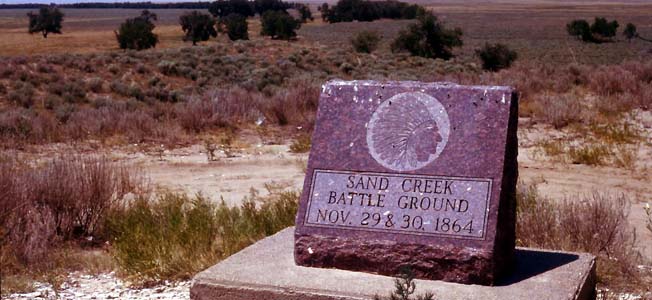
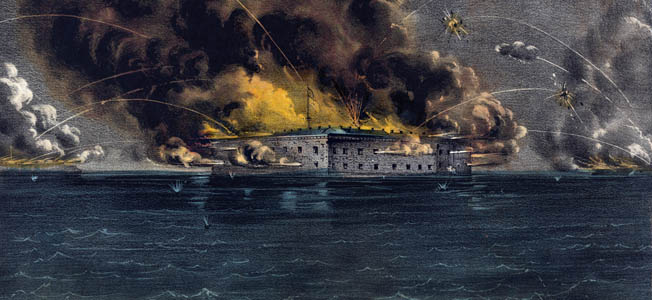
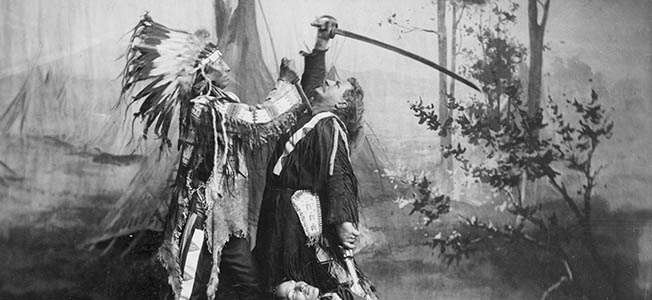
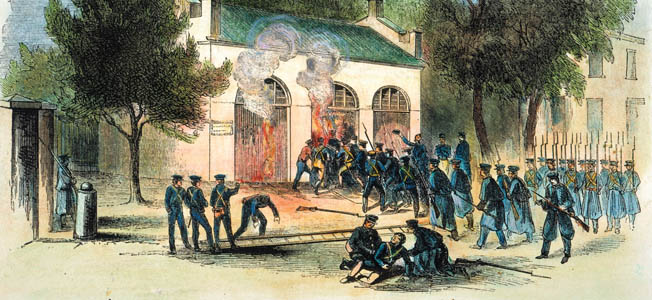
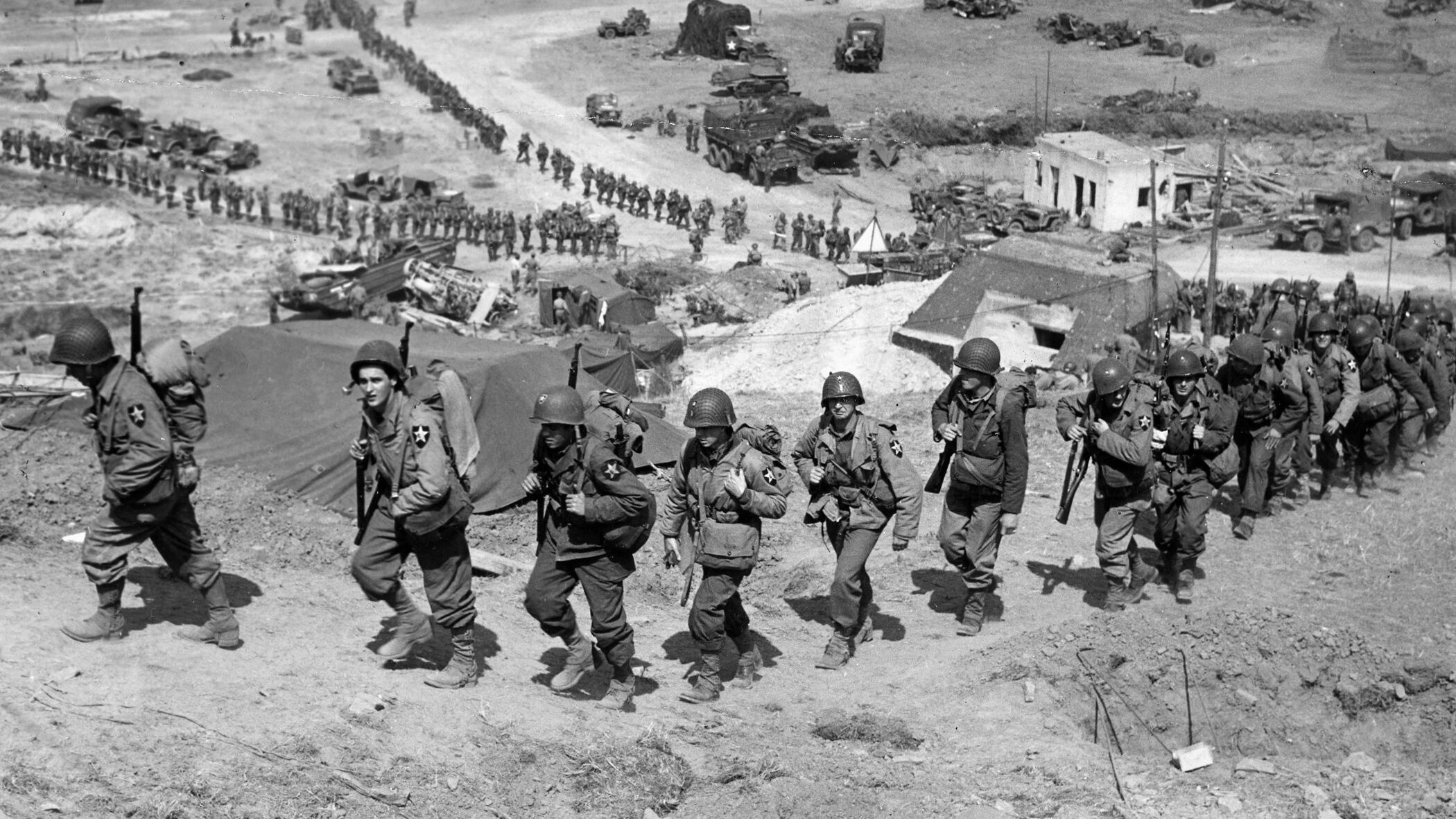
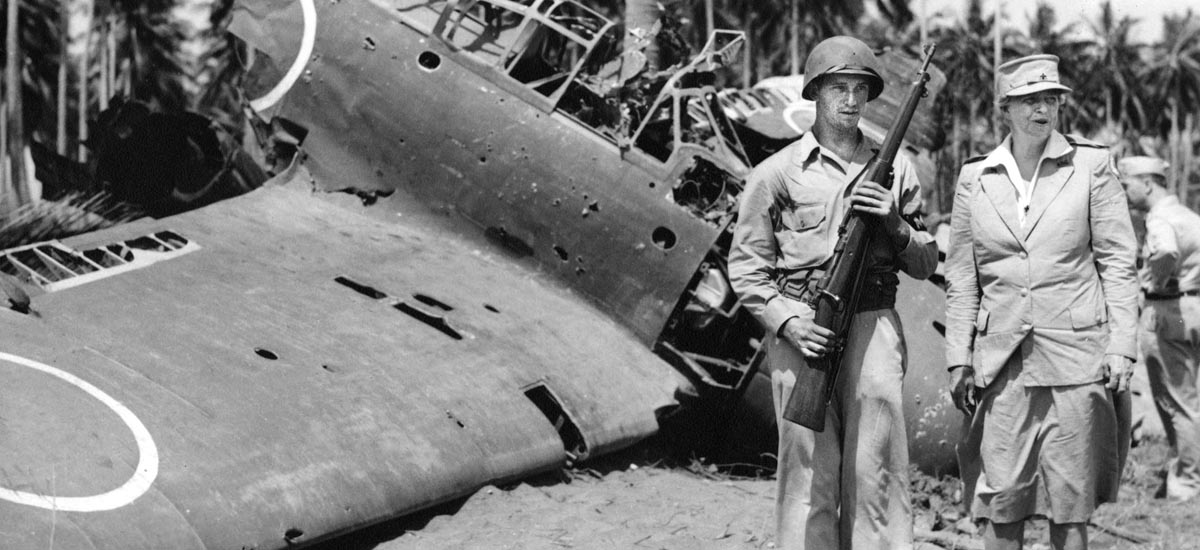

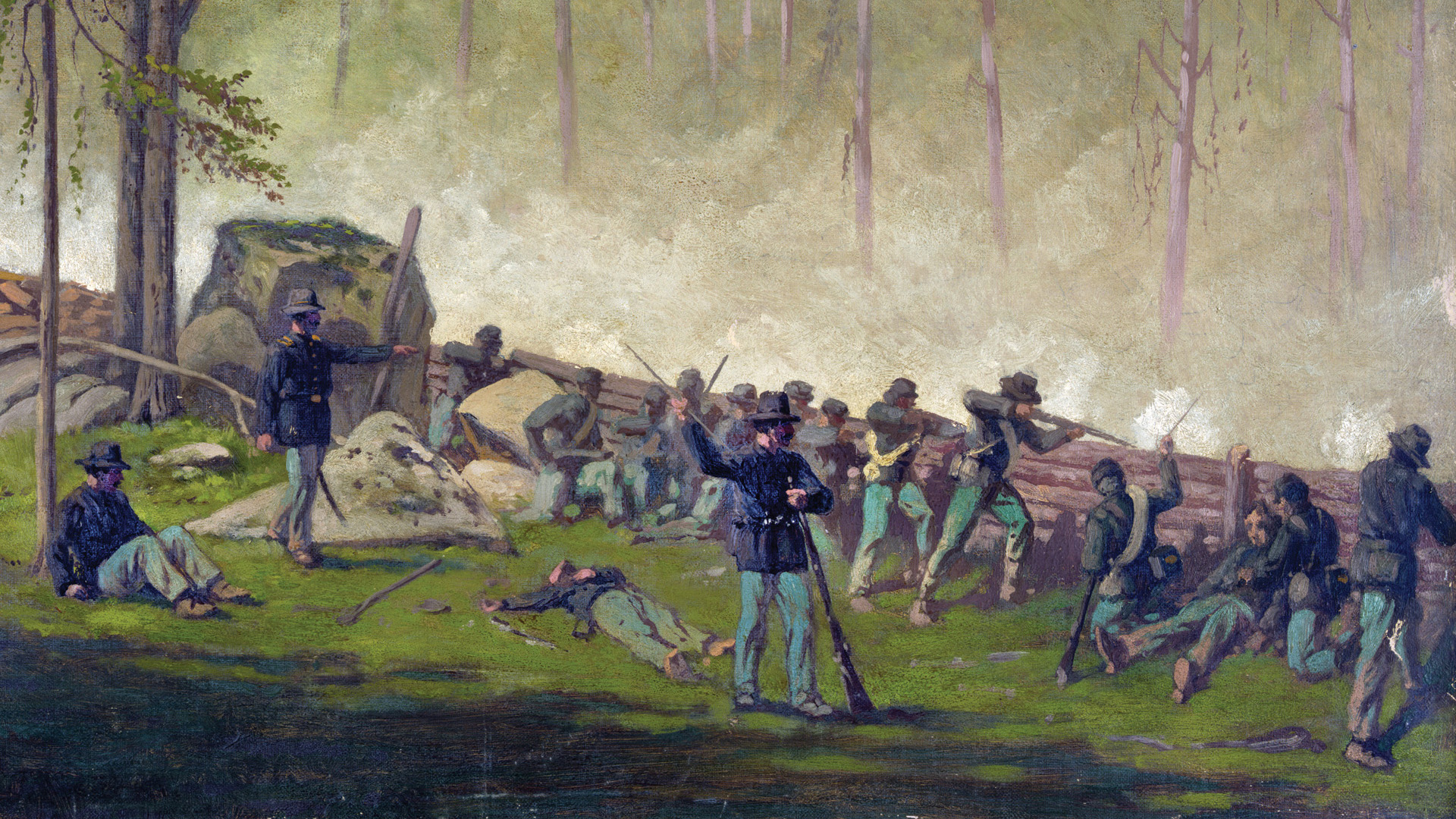
Join The Conversation
Comments
View All Comments